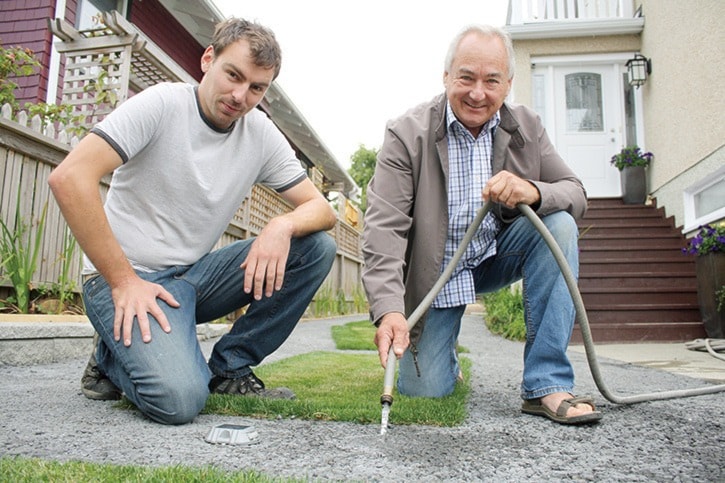A Fairfield home is likely the first in Victoria to install a driveway that lets water run straight through it, an innovative approach that saves the homeowner cash and lessens the load on city pipes.
Ron Manuel decided to install pervious concrete after learning about the City of Victoria’s pending stormwater utility. In January 2015, Manuel will become one of a few Victoria homeowners eligible for up to a 40 per cent discount under new bylaws that reward locals for keeping their rainwater on their property.
“I think it’s great,” he said, hosing the driveway to demonstrate the lack of run-off water. “This can take gallons of water a minute, and it just runs straight through.”
For all residential homeowners, the city will soon begin calculating the utility charge from the hard area footprint, or roof coverage, of each home. Driveway footprints will be averaged at three per cent of the roof’s footprint, while annual discounts will be available for homes that have rain gardens, cisterns, green roofs or permeable surfaces like Manuel’s driveway.
“It’s about 15 per cent more expensive than normal concrete, but it’s worth it,” he said.
Pervious paving includes everything from porous concrete to “grass-crete,” or concrete stones that allow grass to grow between them, said Ed Robertson, assistant director of public works.
“Pervious concrete should be able to handle the water that lands on it and penetrate the soil underneath,” he said. “Parking and driveways are bad areas for oil and other run-off, so keeping that out of our stormwater system and the ocean is key.”
Russ Barry, whose team from Interactive Construction installed the driveway last month, said homeowners in Vancouver and elsewhere are embracing pervious concrete and green building ideas, which have come down in cost in the past decade.
“There’s no slurry to the concrete mix,” said Barry, who had to test the material multiple times offsite before getting it right. “What we’re effectively doing is gluing the mixture together and it creates air space. You see the voids with the naked eye.”
Barry said other contractors and municipal engineers have shown early interest in the product, and he expects more homeowners will see its benefit once the stormwater utility kicks in next year.
